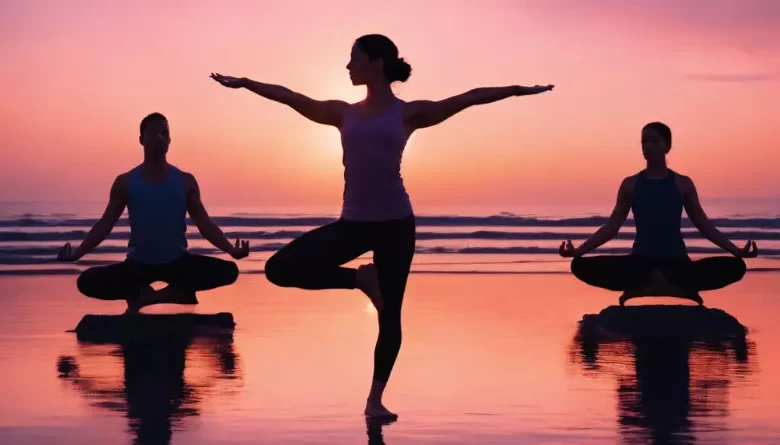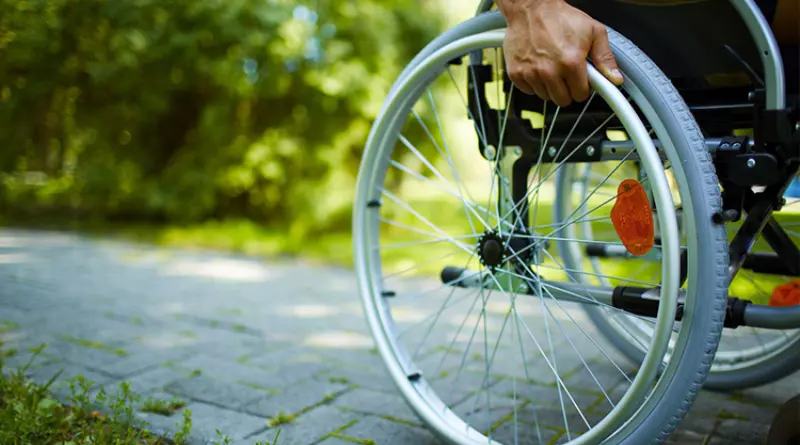Balancing Life: The Daily Yoga Routine for Body and Mind

In today’s fast-paced world, where stress and imbalance are common, yoga offers a complete approach to bringing together our mind, body, and soul. Through various practices like exercises, breathing techniques, and meditation, yoga has evolved but remains a powerful way to connect with our true selves. Studied extensively, yoga has proven benefits for physical and mental fitness. Regular practice helps us find balance, calmness, and strength, allowing us to handle life’s challenges gracefully.
Yoga Day, celebrated on June 21st, was established by the United Nations General Assembly to acknowledge the universal importance of yoga. Inspired by India’s Prime Minister Narendra Modi, Yoga Day promotes harmony and peace globally, reminding us of yoga’s transformative power.
As we delve into the world of yoga, we discover not just physical postures and breathing exercises but also a deep philosophy guiding us toward a balanced and fulfilling life. Whether we’re looking for strength, flexibility, inner peace, or a closer connection with ourselves, yoga provides a path to pursue. Let’s explore the vast world of yoga and its role in nurturing a healthy body, a peaceful mind, and a harmonious life.
The Significance of Yoga
Engaging in yoga practice plays a crucial role in managing our mind, body, and soul. It brings together physical and mental disciplines, working towards achieving a peaceful state of mind. Below are some key reasons that emphasize why yoga is important in our daily lives:
1.Stress and Anxiety Management:
Yoga helps in handling stress and anxiety effectively, providing a sense of calmness and composure.
2.Relaxation and Calmness:
Regular yoga practice keeps you relaxed, calm, and composed, contributing to a more serene mental state.
3.Enhanced Flexibility and Strength:
Engaging in yoga routines increases flexibility, builds muscle strength, and tones the body, promoting overall physical well-being.
4.Improved Respiration and Vitality:
Yoga practices focus on breathing techniques, leading to improved respiration, increased energy levels, and enhanced vitality.
5.Yoga Poses for Weight Loss:
Specific yoga poses can be incorporated for weight loss, making it a versatile practice for those aiming to shed extra pounds.
6.Building Confidence:
Yoga is not just about physical postures; it builds confidence by improving flexibility and strength, both physically and mentally.
7.Boosting Immunity:
Regular yoga sessions contribute to boosting immunity, helping the body defend itself against illnesses more effectively.
8.Promoting a Healthier Lifestyle:
Incorporating yoga into your routine supports and encourages a healthier lifestyle, encompassing both physical and mental well-being.
In essence, the regular practice of yoga goes beyond just physical exercise – it becomes a holistic approach to fostering a balanced and healthy life.
Varieties of Yoga Poses
Yogasanas, the physical postures of yoga, are a gateway to physical fitness, mental serenity, and spiritual awakening. As you embark on your journey to holistic well-being, let’s explore some of the best Yogasanas that cater to various aspects of your health.
Tadasana (Mountain Pose):
Tadasana is the foundational pose that focuses on grounding and alignment Stand tall, bringing your feet together, arms hanging by your sides, and palms facing forward. Activate your thighs, elevate your chest, and extend your arms toward the sky. This posture enhances posture, balance, and concentration.
Adho Mukha Svanasana (Downward-Facing Dog):
A fundamental pose in many yoga styles, Downward-Facing Dog strengthens the entire body. Begin with your hands and knees on the ground, lift your hips upward toward the ceiling, and extend your legs straight. This pose enhances flexibility, tones muscles, and energizes the body.
Virabhadrasana I (Warrior I Pose):
Warrior I is a powerful standing pose that builds strength and focus. Step one foot back, bend the front knee and extend your arms overhead. This pose cultivates stamina, improves balance, and instills a sense of confidence and courage.
Paschimottanasana (Seated Forward Bend):
Seated Forward Bend is a seated pose that stretches the spine and hamstrings. Sit with legs extended, hinge at the hips, and reach towards your toes. This asana calms the mind, relieves stress, and stimulates digestion.
Bhujangasana (Cobra Pose):
Bhujangasana is a backbend that opens the chest and strengthens the spine. Lie down on your belly, position your hands beneath your shoulders, and raise your chest while keeping the lower part of your body on the ground. This pose enhances flexibility in the spine and alleviates lower back pain.
Sirsasana (Headstand):
Known as the king of all asanas, Sirsasana is an inversion that requires balance and core strength. Start with a solid foundation on your forearms and head, then lift your legs towards the sky. This pose increases blood flow to the brain, improves focus, and boosts overall vitality.
Vrikshasana (Tree Pose):
Tree Pose is a balancing asana that promotes stability and concentration. Stand on one leg, bring the sole of the opposite foot to the inner thigh or calf, and bring your palms together at the heart. This pose enhances balance, strengthens the legs, and instills a sense of tranquility.
Savasana (Corpse Pose):
Corpse Pose is a relaxation pose typically practiced at the end of a yoga session. Lie on your back with legs extended, arms by your sides, and close your eyes. This asana induces deep relaxation, reduces stress, and allows for integration of the benefits gained during the practice.
Conclusion
Yoga is more than just stretching; it’s a practice that shapes how you feel, look, and move. Regular sessions not only boost energy levels but also broaden your outlook on life. Even simple poses, like breathing exercises, can make a significant impact, promoting both physical and mental well-being. The essence of yoga extends beyond the physical, offering a pathway to mindfulness and inner peace.





